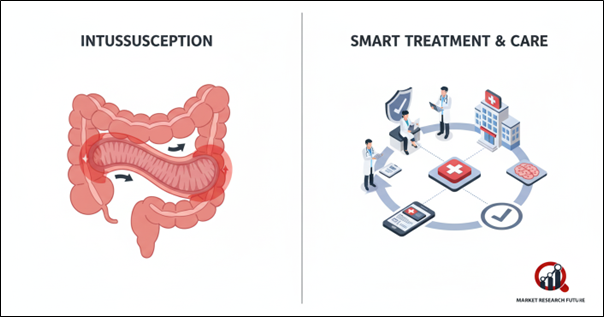Intussusception: Smart Treatment & Care Must Meet

Briefly about intussusception
Intussusception is a dangerous medical condition in which one part of the intestine slides into another. This is like how the parts of a telescope fold into each other. This "telescoping" stops food and fluids from moving normally, which causes pain and blockage in the digestive tract. It usually happens to babies and young kids, but it can also happen to adults who have intestinal problems like polyps, tumors, or infections.
The condition can start with mild discomfort and get worse until it causes severe abdominal pain, vomiting, and blood in the stool. Sometimes, kids look fine between painful episodes, which can make it hard to figure out what's wrong. Other signs can be irritability, a swollen stomach, or not wanting to eat.
Reasons and How It Works
Rotavirus infections are a frequent etiology of intussusception, as they can induce inflammation and hypertrophy of the intestinal walls. Other possible causes are growths in the intestines, swelling of lymphatic tissue, or problems that happen after surgery. Crohn's disease and intestinal tumors are two examples of diseases that can cause this condition in adults.
When the intestine folds in on itself, blood flow is cut off, which can damage tissue and cause infections. If you don't treat this, it could lead to serious problems like bowel obstruction or peritonitis.
Smart Care and Treatment
Early diagnosis is very important for a full recovery. In mild cases, non-surgical methods like an air or barium enema can help the intestines open. But in serious cases, surgery may be needed to remove the affected part and get the intestines working normally again.
Pain management and replacing fluids are two important parts of care. After treatment, patients should be watched for signs of recurrence and general digestive health.
Final Thoughts
Intussusception needs quick medical help and smart treatment plans. If the diagnosis is made quickly, the treatment is effective, and the patient is monitored after treatment, recovery can go smoothly. This lowers the risk of recurrence and improves intestinal health for the future.

Leave a Comment